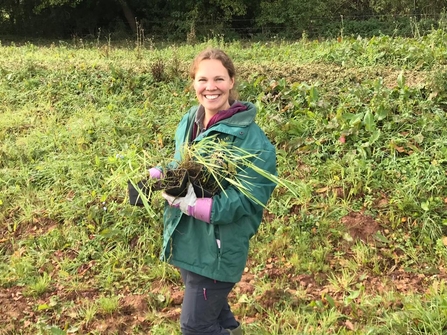The floodplain of the River Lugg is a unique wetland landscape. It includes a series of lakes formed from gravel extraction pits including Bodenham Lake and Wellington Gravel Pits, and wetland areas like our new wetland at Oak Tree farm.
The river, floodplain and lakes of the Lower Lugg Valley could together provide a fantastic landscape for wetland wildlife. However, currently, the distances between the various lakes, and the lack of permanent pasture along the riverside, restrict the movement of wildlife through this landscape. Though wetland birds, mammals and invertebrates can all be found here, they are not visiting or breeding in anywhere near the numbers they should be, nor do we see the diversity of species which could thrive here.
The lower Lugg valley also experiences other challenges, including regular flooding in winter months, soil and bank erosion and high levels of nutrients. In some cases, natural solutions can be used to help reduce these issues, improving the health of the river and increasing habitat. We have been working with the Environment Agency and a local landowner on one of these natural solutions.
Tom Jay was inspired to look at how he could help his local community after the flooding of February 2020. Living and farming upstream of the village with farmland directly bordering the local watercourse meant that Tom was in the perfect location to consider natural flood management solutions. Tom worked with members of the local community and Head of Nature Recovery at Herefordshire Wildlife Trust, Claire Spicer, to plan and design a series of ponds, known as attenuation ponds. The aim of these ponds is to hold some of the water back on the land to reduce the quantity of water flowing downstream and flooding in problematic areas.




